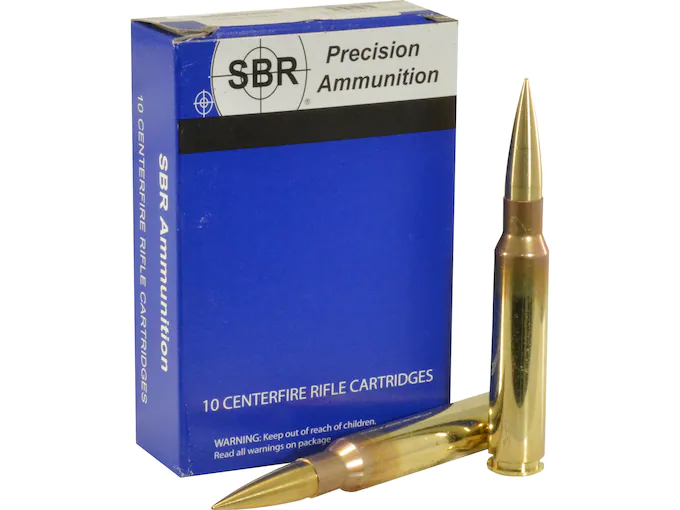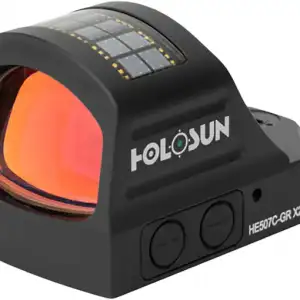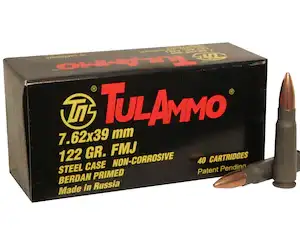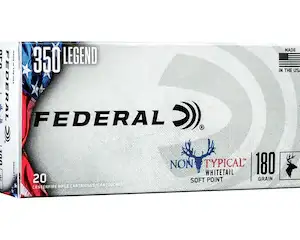Description
408 cheytac ammo Overview
This 408 cheytac ammo called SBR ammunition is match-grade quality and is used by top level shooters
like Team Smith & Wesson’s BJ Norris. Here’s what BJ had to say about SBR Ammunition:
“Having fired well over 300,000 rounds during my career as a competitive pistol shooter, I have specific things I look for in ammunition. It must be accurate, consistent, and above all totally reliable. SBR Ammunition fits these descriptions perfectly. Developed and manufactured on state of the art equipment, each load goes through an exhaustive testing process before being packaged and marketed. Quality ammunition is a passion of Buddy Singleton and it shows up in every aspect of SBR’s products, from the LaserMatch Tracers to the Special-Application-Subsonic rounds designed specifically for suppressors, you can trust SBR to deliver their best in every box, I know I do.”
This ammunition is new production, non-corrosive, in boxer primed, reloadable brass cases.
Made In United States of America
409 cheytac ammo Specifications
Product Information
| Cartridge | 408 CheyTac |
| Grain Weight | 400 Grains |
| Quantity | 10 Round |
| Bullet Style | Solid Round Nose |
| Bullet Brand And Model | Lehigh Match |
| Lead Free | No |
| Case Type | Brass |
| Primer | Boxer |
| Corrosive | No |
| Reloadable | Yes |
| G1 Ballistic Coefficient | 0.983 |
| Velocity Rating | Supersonic |
| Country of Origin | United States of America |
Delivery Information
| Shipping Weight | 1.360 Pounds |
| DOT-Regulated | Yes |
The 408 Cheytac ammo is based on the .400 Taylor Magnum, which itself is based on a modified .505 Gibbs,
necked down to 0.408 inches (10.36 mm).
The .505 Gibbs is an old English big game cartridge that was designed to accommodate 39,160 psi (270 MPa) pressure.
One of the disadvantages to these old cartridge cases intended for firing cordite charges instead of
modern smokeless powder is the thickness of the sidewall just forward to the web.
During ignition, the cartridge’s base, forward to the bolt face, is not supported.
The case is driven back against the bolt face which results in the stretching of the case,
particularly the sidewall immediately forward of the web.
When the sidewall resists the outward expansion against the chamber,
the pressure stretches the case thereby increasing its length resulting in the sidewall becoming thinner at that stretch point.
In the .408 CheyTac cartridge casing design particular attention was directed toward thickening
and metallurgically strengthening the case’s web and sidewall immediately forward to the web to
accommodate high chamber pressures. In modern solidhead cases,
the hardness of the brass is the major factor that determines a case’s pressure limit before undergoing plastic deformation.
Lapua Ltd. solved this problem when they used the .416 Rigby as the parental case to the .338 Lapua Magnum.
They created a hardness distribution ranging from the head and web (hard) to the mouth (soft) as well as
a strengthened (thicker) case web and sidewall immediately forward of the web. This method results in a very pressure resistant case.
408 cheytac ammo Cartridge dimensions
The .408 Cheyenne Tactical became officially registered by the Commission Internationale
Permanente pour l’Epreuve des Armes à Feu Portatives (C.I.P.) on 15 May 2013 ending its status as a wildcat cartridge.
In 2020 it was deregistered by the C.I.P.
The .408 Cheyenne Tactical has 10.32 ml (159 grains H2O) cartridge case capacity.
.408 Cheyenne Tactical maximum C.I.P. cartridge dimensions. All sizes in millimeters (mm).
Americans would define the shoulder angle at alpha/2 ≈ 22.13 degrees.
The common rifling twist rate for this cartridge is 330.2 mm (1 in 13 in), 8 grooves, Ø lands
= 10.16 mm (0.400 in), Ø grooves = 10.36 mm (0.408 in), land width = 2.57 mm (0.1 in) and
the primer type is large rifle.
According to the official C.I.P. (Commission Internationale Permanente pour l’Epreuve des Armes à Feu
Portatives) rulings the .408 Cheyenne Tactical can handle up to 440.00 MPa (63,817 psi) Pmax piezo pressure.
In C.I.P. regulated countries every rifle cartridge combo has to be proofed at 125% of this maximum C.I.P.
pressure to certify for sale to consumers.
This means that .408 Cheyenne Tactical chambered arms in C.I.P. regulated countries are currently (2016)
proof tested at 550.00 MPa (79,771 psi) PE piezo pressure.
| .375 Cheyenne Tactical | ||||||||||||
|---|---|---|---|---|---|---|---|---|---|---|---|---|
| Type | Sniper rifle | |||||||||||
| Place of origin | United States | |||||||||||
| Production history | ||||||||||||
| Designed | 2009 | |||||||||||
| Manufacturer | CheyTac USA LLC | |||||||||||
| Produced | 2009–present | |||||||||||
| Specifications | ||||||||||||
| Parent case | .408 CheyTac | |||||||||||
| Case type | Rimless, bottleneck | |||||||||||
| Bullet diameter | 9.53 mm (0.375 in) | |||||||||||
| Land diameter | 9.30 mm (0.366 in) | |||||||||||
| Neck diameter | 10.31 mm (0.406 in) | |||||||||||
| Shoulder diameter | 15.22 mm (0.599 in) | |||||||||||
| Base diameter | 16.18 mm (0.637 in) | |||||||||||
| Rim diameter | 16.25 mm (0.640 in) | |||||||||||
| Rim thickness | 1.60 mm (0.063 in) | |||||||||||
| Case length | 76.91 mm (3.028 in) | |||||||||||
| Overall length | 113.40 mm (4.465 in) | |||||||||||
| Primer type | Large rifle | |||||||||||
| Maximum pressure | 440 MPa (64,000 psi) | |||||||||||
| Ballistic performance | ||||||||||||
|
||||||||||||
Ballistic coefficient of the 408 cheytac ammo
Cheyenne Tactical claimed a Doppler radar-measured G1 ballistic coefficient (BC) for the Lost River Ballistic
Technologies/Jamison International 419-grain (27.15 g) bullet of roughly 0.934 and a stated BC for the 305-grain
(19.76 g) bullet of 0.611,10 though these numbers have been disputed by a number of knowledgeable sources.
Extreme Firearms claimed the G1 BC of the same .408 CheyTac projectile to average 0.945 to
2000 meters and it drops to the low 0.900s to 2800 meters.11
The .408 CheyTac projectile remains supersonic up to 2,300 yards (2,100 m) according to Extreme Firearms.
CheyTac LLC claims that the 26.95 gram (419 gr) projectile has a supersonic range of 2,200+ yards (2,011+ m)
at ‘standard air conditions’.
The average ballistic coefficient of the 419 grain (27.15 g) is 0.945 over 3,825 yards (3,500 m).
Jamison International states the G1 BC of this bullet on their website currently (2009) at 0.940.
The above variations can be explained by differences in the ambient air density used for these
BC statements or differing range-speed measurements on which the stated G1 BC averages are based.
The BC changes during a projectile’s flight and stated BC’s are always averages for particular range-speed regimes.
Some more explanation about the transient nature of a projectile’s G1 BC (it rises above or gets under
a stated average value for a certain speed-range regime) during flight can be found at the external ballistics article.
This article implies that knowing how a BC was established is almost as important as knowing the stated BC value itself.
Fixed drag curve models generated for standard-shaped projectiles or BC modelling are the
most common method used but not an advanced nor desirable method to model the long range flight behavior of projectiles.
Balanced-flight/controlled-spin projectile of 408 cheytac ammo
Lost River Ballistic Technologies (statement of Mr. Warren Jensen) stated that “the
.408 CheyTac is the first bullet/rifle system that utilizes what they call a balanced flight projectile.
To achieve balanced flight the linear drag has to be balanced with the rotational drag to keep the very fine nose (meplat)
of the bullet pointed directly into the oncoming air. It should result in very
little precession and yaw at extreme range and allows accurate flight back through the transonic region.
This is hard to achieve for small arms projectiles.
Mathematically you are at a great disadvantage trying to achieve balanced flight with a lead core non mono metal bullet. The rotational mass/surface area ratio is too high.
The balanced flight projectile patent can be found at the US Patent Office, Controlled spin projectile, US PAT No. 6,629,669.
According to the patent a projectile engraved and launched in accordance with the patent should decelerate from supersonic
flight through transonic to subsonic in a stable and predictable manner effective to a range beyond 3000 yards (2,743 m).
It implies that among several other preconditions the rifle barrel has to have specific rifling dimensions
to achieve a desired amount of axial air drag on the bullet’s surface, which reduces the bullet’s spin rate
to achieve balanced flight. The patent does not account for normally occurring differences in air density.
More about balanced flight can also be found in the CheyTac Information Papers.
The Balanced Flight/Controlled Spin Projectile bullet patent has been questioned/disputed by the German physicist Lutz Möller.
Mr. Möller realized balanced flight has to do with the nature of spin stabilized flight and scale of parameters
. There were projectiles produced prior to the patent that remain stable through the transonic flight regime.
This is a consequence of the spin deceleration and forward deceleration of the
projectile being similar enough not to cause undesirable precession and yaw during the transonic flight phase.
The main parameter for achieving stable transonic transition is controlling the drag coefficients (Cd)
and forward velocity loss around Mach 1 and to a lesser degree controlling the spin deceleration.
In other words, any bullet with appropriate drag behaviour around Mach 1 and mass (distribution)
will do exactly what the balanced flight projectile patent states.









Reviews
There are no reviews yet.